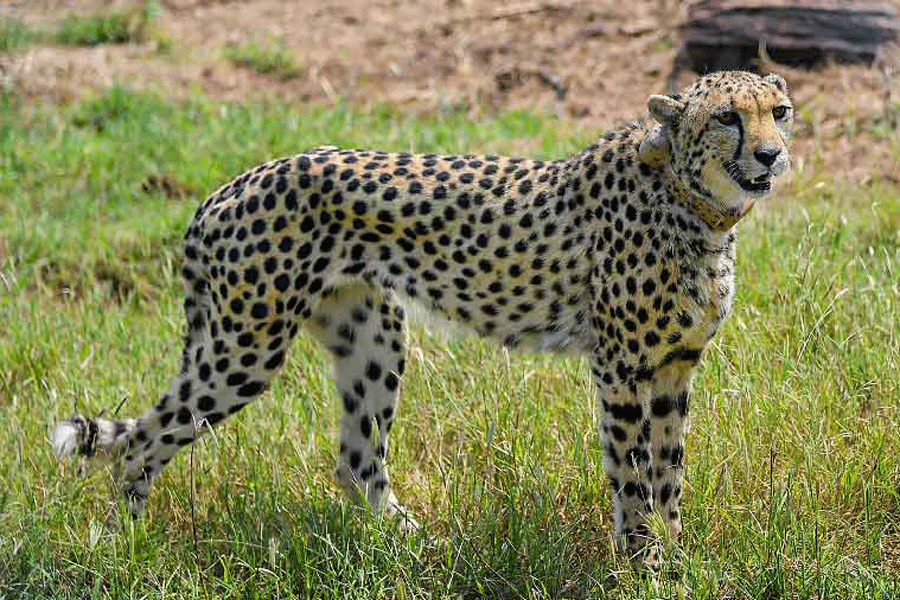Two cheetah deaths in the Kuno National Park this week have exposed what some wildlife veterinarians believe is an unforeseen challenge — neck collars on the cheetahs in India’s wet weather leading to inflammation, bacterial infections and septicaemia.
A male cheetah that died in Kuno’s unfenced area on Friday and another male cheetah that died within a fenced area on Tuesday appear to have succumbed to collar-related infections, a South African expert guiding India’s cheetah introduction project said.
“The wounds in both the cheetahs almost certainly were not caused by another animal but by a problem that we did not foresee because we put collars on cheetahs in Africa without problem,” Adrian Tordiffe, associate professor at the University of Pretoria, South Africa, said.
A preliminary post-mortem examination of the cheetah that died on Tuesday and video clips of the wounds near the necks of both the dead cheetahs suggest they died after skin inflammation under the collar attracted flies and cascaded into life-threatening septicaemia (blood poisoning by bacteria).
“Possibly because of the humid or wet weather, water accumulates underneath the collar and causes the skin to be constantly wet. This condition attracts flies, the flies lay eggs, and the fly larvae — or maggots — feed on tissues and create wounds that get infected and can lead to systemic infection,” Tordiffe said.
The cheetah project uses satellite transmitters on the collars to track the cheetah movements.
While such wounds may start near the neck, Tordiffe said, as the larvae crawl along the cheetah’s back, the wounds too could extend to other parts of the back. “This is an area that cheetahs cannot clean and lick away the larvae,” he said.
The video images of the wounds on both the cheetahs point to such maggot-caused wounds and the post-mortem examination on the cheetah that died on Tuesday points to signs of shock, or multiple organ failure caused by septicaemia, Tordiffe said.
He said a solution would need to be found quickly as the monsoon season is under way. The other cheetahs may need to be examined for skin inflammation under the collars. Some of the collars may need to be removed and other ways to monitor the cheetahs found.
Friday’s death was the eighth loss for the cheetah project but the first in Kuno’s unfenced area. All seven previous deaths — four adult cheetahs and three cubs — had died within fenced enclosures where they were expected to be safer than in the unfenced area where they are exposed to leopards.
A preliminary post-mortem report on the cheetah that died on Tuesday had noted that the animal had superficial wounds on the neck but had pathological changes in the heart, lungs and kidneys. Those changes, Tordiffe said, were consistent with septicaemia.










